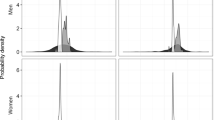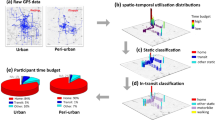Abstract
A combined epidemiological–exposure panel study was conducted during the summer of 1998 in Baltimore, Maryland. The objectives of the exposure analysis component of the 28-day study were to investigate the statistical relationships between particulate matter (PM) and related co-pollutants from numerous spatial boundaries associated with an elderly population, provide daily mass concentrations needed for the epidemiological assessment, and perform an extensive personal exposure assessment. Repeated 24-h integrated PM2.5 (n=394) and PM10 (n=170) data collections corresponding to stationary residential central indoor, individual apartment, residential outdoor and ambient monitoring were obtained using the same sampling methodology. An additional 325 PM2.5 personal air samples were collected from a pool of 21 elderly (65+ years of age) subjects. These subjects were residents of the 18-story retirement facility where residential monitoring was conducted. Mean daily central indoor and residential apartment concentrations were approximately 10 µg/m3. Outdoor and ambient PM2.5 concentrations averaged 22 µg/m3 with a daily range of 6.7–59.3 µg/m3. The slope of the central indoor/outdoor PM2.5 mass relationship was 0.38. The average daily ratio of PM2.5/PM10 mass co ncentrations across the measurement sites ranged from 0.73 to 0.92. Both the central indoor and mean apartment PM2.5 mass concentrations were highly correlated with the outdoor variables (r>0.94). The lack of traditionally recognized indoor sources of PM present within the facility might have accounted for the high degree of correlation observed between the variables. Results associated with the personal monitoring effort are discussed in depth in Part 2 of this article.
This is a preview of subscription content, access via your institution
Access options
Subscribe to this journal
Receive 6 print issues and online access
$259.00 per year
only $43.17 per issue
Buy this article
- Purchase on Springer Link
- Instant access to full article PDF
Prices may be subject to local taxes which are calculated during checkout
Similar content being viewed by others
Author information
Authors and Affiliations
Corresponding author
Rights and permissions
About this article
Cite this article
WILLIAMS, R., SUGGS, J., ZWEIDINGER, R. et al. The 1998 Baltimore Particulate Matter Epidemiology–Exposure Study: Part 1. Comparison of ambient, residential outdoor, indoor and apartment particulate matter monitoring. J Expo Sci Environ Epidemiol 10, 518–532 (2000). https://doi.org/10.1038/sj.jea.7500107
Received:
Accepted:
Published:
Issue Date:
DOI: https://doi.org/10.1038/sj.jea.7500107
Keywords
This article is cited by
-
Introducing DNA-based methods to compare fungal microbiota and concentrations in indoor, outdoor, and personal air
Aerobiologia (2018)
-
An evaluation of the impact of flooring types on exposures to fine and coarse particles within the residential micro-environment using CONTAM
Journal of Exposure Science & Environmental Epidemiology (2016)
-
Human exposures to PAHs: an eastern United States pilot study
Environmental Monitoring and Assessment (2013)
-
Factors affecting personal exposure to thoracic and fine particles and their components
Journal of Exposure Science & Environmental Epidemiology (2012)
-
Time series analysis of personal exposure to ambient air pollution and mortality using an exposure simulator
Journal of Exposure Science & Environmental Epidemiology (2012)



